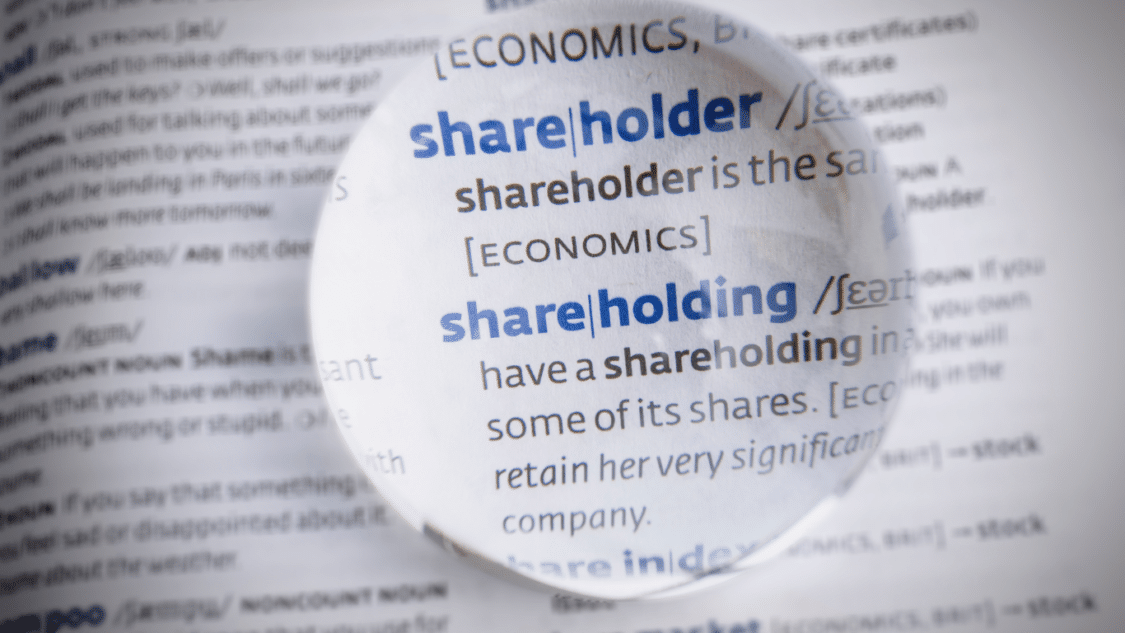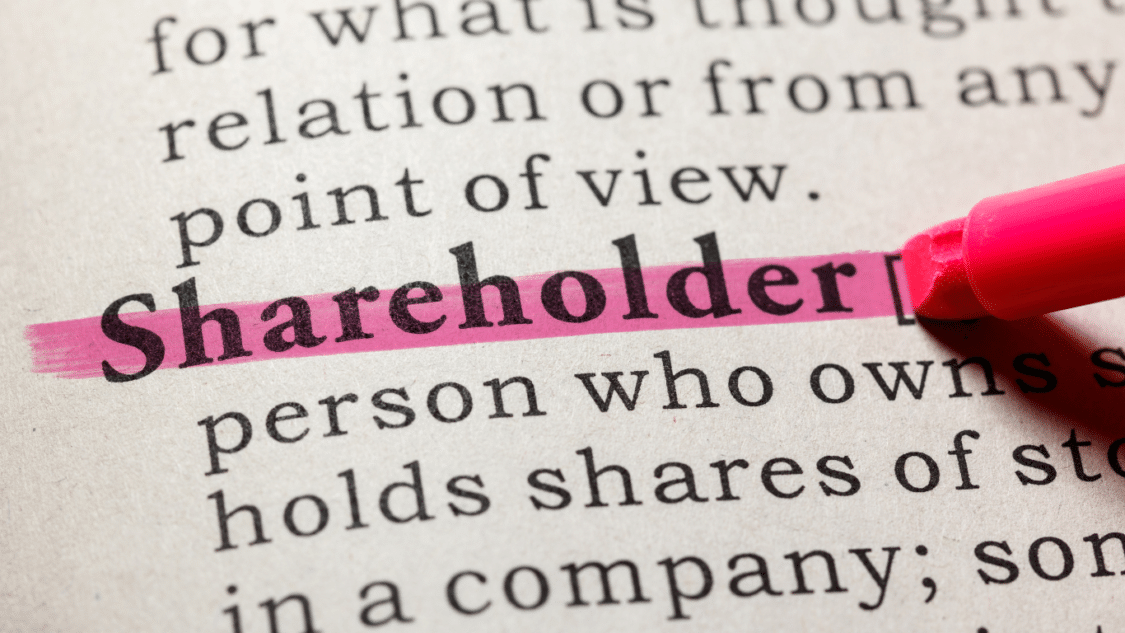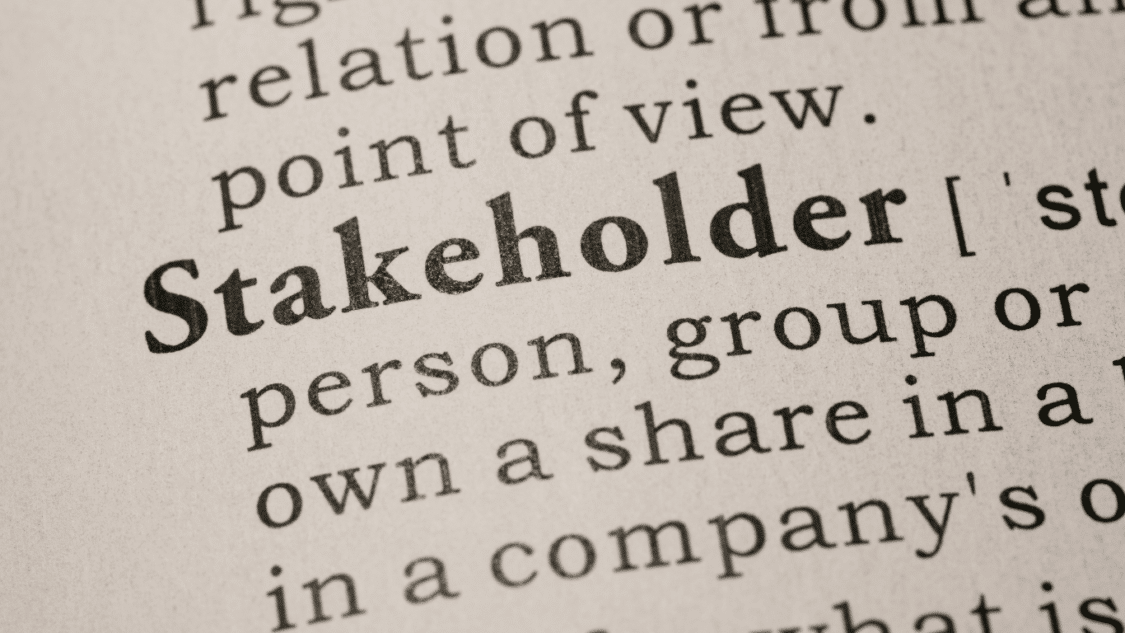- The Shareholder
- Types of A Shareholder
- The Stakeholder
- Types of Stakeholders
The terms shareholders and stakeholders may sound similar but have two different meanings. We hope that by the end of this article, you understand what the two terms mean clearer.

The Shareholder
A shareholder is someone who holds shares of a company. When speaking of shares, we’re referring to a small percentage of a company an investor buys through stocks. These individuals are, of course, interested in making the most of their investment. The company’s success is essentially your success as well. Stock prices rise when the company is on a roll and vice versa. They are considered an investor who can sell their stock shares when the price increases and make a profit.

A shareholder gains dividends from his investment. He can vote on the company policies and elect members depending on how much he owns. Essentially anyone who owns a share of a company can vote. However, your power depends on the number of shares you own, which then dictates how much power your vote carries.
Types of A Shareholder
Depending on your stock type, you fall under one of two categories, common or preferred. Both shares can be purchased using a standard brokerage account but have different benefits.
A common shareholder owns common stock, which usually has higher return rates. This is usually a long-term investment. As we discussed, they can vote and elect members to the board. Common shareholders are a bit riskier than the preferred ones. If a company liquidates, they claim assets only after bondholders, preferred shareholders, and debtholders are given total payments.
A preferred shareholder owns what we call preferred stocks. This type of stock usually brings back low returns in the long term. However, it does provide them with an annual dividend payment. They are not provided with the benefits of voting on the policies of the company or electing members. It includes less risk than common shareholders because they can claim their assets before common stakeholders.
The Stakeholder
A stakeholder can influence or is influenced by the project you’re working on. This is usually about project management. All participants must collaborate effectively to work together on a project. Another example where they come in is in connection with a shareholder. Sometimes, a shareholder is the project’s stakeholder if the result impacts stock prices.

Stakeholders range from independent contributors to firm executives. They don’t have to be internal either—for example, an external agency with which you collaborate may be a stakeholder in an upcoming event. Similarly, your consumers might be a type of stakeholder if their choices directly impact your product.
Types of Stakeholders
An Internal stakeholder includes co-workers and cross-functional partners who have a direct relationship with your firm. They are often, but not always, hired by your organization. Shareholders, for example, are internal stakeholders, and they are linked to your firm through the stocks they own. As a result, projects that affect stock prices directly impact them.
An External stakeholder is not connected to your company, suppliers, or customers. Your project influences them even if they are not part of your company. For example, increasing the size of a manufacturing project would need extra resources from suppliers.
What are 3 differences between a shareholder and a stakeholder?
The roles of these two classes are very different. Shareholders are interested in the company because they want to make the most of their investment. On the other hand, a stakeholder is more interested in the notion of finances.
They both have distinct roles in company ownership and governance. Shareholders are individuals or entities who own stock in a firm and are primarily focused on maximizing financial returns on their investment. They have certain rights, such as voting on certain decisions, receiving dividends, and accessing company performance information. They are also only partially liable for the company’s debts and responsibilities. Their focus is on financial gains, and they intend to improve the value of their shares through factors such as profit growth, dividends, and capital appreciation.
On the other hand, stakeholders include a more comprehensive range of individuals or groups interested in “stake” in an organization’s activities and outcomes. Employees, consumers, suppliers, communities, and even competitors can participate. Beyond financial results, they are interested in various aspects of the company’s operations. While they do not have the same legal rights as shareholders, they have a vested interest in the company’s success. Their tasks focus on ensuring that the firm runs ethically, that its long-term profitability is maintained, and that the effects of its actions on various stakeholders are considered.
The distinction between the two is based on their goals, opinions, and level of influence. Shareholders are primarily concerned with maximizing their financial profits and investment returns. They assess the company’s performance based on elements that can raise the value of their shares. On the other hand, a stakeholder has broader concerns beyond financial advantages. They are concerned with the company’s environmental effects, social responsibility, employee well-being, product quality, customer happiness, and community development. Their goals include both the financial and non-financial aspects of company performance.
Regarding influence and decision-making, a shareholder can elect the board of directors and participate in significant company decisions through voting rights. Their voting power is usually proportional to the amount of stock they own. Stakeholders, however, don’t hold that decision-making authority but can influence decisions in other ways. They can express their concerns through lobbying, managerial engagement, public pressure, and consumer decisions. While shareholders have a more significant direct influence on company choices, stakeholders are critical in holding corporations accountable and ensuring their actions are consistent with more extensive societal and environmental interests.
Now that we have discussed the two let’s discuss the difference between shareholders and stakeholders with examples.
What are shareholders and stakeholders with examples?
Shareholder:
What are examples of shareholders?
- Investors who are holding shares in a publicly traded company.
- Mutual or pension funds that invest in a wide range of stocks.
- Company founders or executives who have a portion of the company.
- Venture capitalists are those who provide funding in exchange for equity.
- Private equity companies that invest in privately held businesses.
Stakeholder:
What are the 4 stakeholders?
- Employees working for a company rely on it for their income and livelihood.
- Suppliers who supply the organization with components or raw materials
- Local communities in which the corporation operates, including residents and companies impacted by the company’s presence.
- Investors: Individuals with a financial interest in the company’s performance are eager for a return on their investment through capital appreciation and dividends.
Why are shareholders important to stakeholders?
A shareholder is important to a stakeholder since they have a financial stake in the firm. A shareholder has invested funds in the company’s shares and anticipates a return on that investment. Their economic well-being is closely related to the company’s success and profitability.
They have a considerable financial stake in the firm and have invested their money hoping for a profit. They contribute the cash required to support the company’s operations, development, and innovation, allowing it to expand and capitalize on market possibilities. Their ownership and voting rights enable them to influence critical choices such as board appointments and important commercial deals. Shareholders’ primary interest is to maximize shareholder value through capital appreciation and dividends, which drives management choices and priorities.
Additionally, their trust in the company can impact its reputation and market perception, attracting more investors and improving access to capital markets. However, while a shareholder is essential, other stakeholders, such as workers, customers, and communities, contribute to the company’s success. Considering the interests of all stakeholders is critical for the organisation’s long-term sustainability and ethical operation.
Can a shareholder be considered a stakeholder?
Yes, the terms are often used interchangeably. At the same time, they do have slightly different meanings.
While a shareholder is a stakeholder due to their financial investment, a stakeholder also includes those who are impacted by the company’s activities, such as employees who rely on the company for employment, customers who rely on the company’s products or services, and communities that may be affected by the company’s operations.
How do shareholders and stakeholders influence a company’s financial performance?
Shareholders and stakeholders have a substantial impact on a company’s financial performance. A shareholder, also known as the investors, provides money through their financial commitments, enabling the business to support operations and look for ways to expand. The company’s economic choices and allocation of resources are driven by its expectations of returns and dividends. Based on their opinions of the company’s financial situation and prospects, shareholders may also affect the stock price by purchasing and selling.
On the other hand, stakeholders, such as staff members, clients, vendors, and the general public, also impact a company’s financial performance. Productivity and satisfaction among staff members are critical factors in the effectiveness and overall profitability of the business. Customer satisfaction drives profitability and revenue growth. Suppliers’ prices and dependability can impact the organisation’s cost structure and supply chain effectiveness. Its reputation and brand value may be affected by how the community views and supports the company’s actions.
Making strategic decisions involves input from stakeholders and shareholders, assuring the business’s long-term survival and financial performance. Their participation in corporate governance procedures encourages openness, responsibility, and prudent financial management.
Closing Thoughts:
Finally, the relationship between stakeholders and shareholders is critical in any firm. While stakeholders include a more comprehensive range of individuals and organisations interested in the company’s actions and achievements, shareholders are the company’s owners. Both have a significant impact on the organisation’s success and decision-making processes. They each bring a unique set of viewpoints, goals, and expectations. To maintain long-term sustainability and growth, it is critical to understand and balance the interests of both. Companies may seek to generate value for all parties by encouraging open communication, transparency, and cooperation.
For more news updates, visit our homepage now and see our latest news article. Want to learn more about trading? Visit our education page now and learn for FREE!
Be Cautious of Airdropped Tokens(Opens in a new browser tab)
What Are Stocks?(Opens in a new browser tab)

